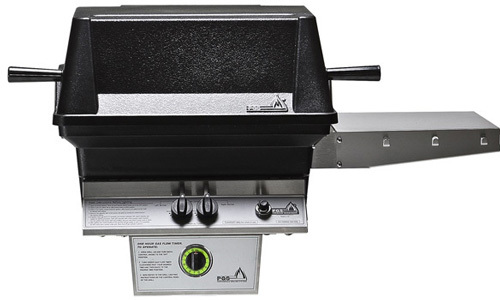Maintaining Outdoor Gas Grills and Patio Heaters
9 minute read | PGS Grill

Outdoor gas grills and patio heaters are designed for seasonal use. While gas grills are most popular during the summer months, they're also commonly used in spring and fall. On the other hand, patio heaters are typically reserved for the colder months of winter. Both appliances require minimal maintenance, but regular care is essential to ensure they function properly and last longer. Keep reading to discover how to maintain your outdoor gas grill and patio heater effectively.
Gas Grill Maintenance
The first step in maintaining your new gas grill is to run it for about an hour to burn off any residue from the manufacturing process. After that, it's a good idea to apply a non-stick spray to the cooking surface. This helps prevent food from sticking, even if you don't plan on using the grill right away.
Cleaning is one of the most important parts of gas grill maintenance. Use a wire brush to remove stubborn food particles and grease. There are also specialized grill cleaners available on the market. Don’t forget to use a high-quality grill cover to protect it from the elements and keep it looking new.
During the off-season, especially in winter, take the time to disassemble the grill and give it a thorough cleaning. Inspect all parts for signs of damage or rust. Even a small amount of rust should be addressed immediately to avoid further issues.
A key part of preventative maintenance is checking the rubber hose that connects the gas tank to the grill. Small animals like mice and rats can chew through these hoses, leading to gas leaks. If you detect a gas smell when turning on the grill, turn it off immediately and inspect the hose for damage.
Preventive Care and Maintenance for Patio Heaters
Patio heaters are simple and reliable, but they still need some basic maintenance to keep them running smoothly. Regular checks can help prevent costly repairs and extend the life of your heater. If you live in an area with harsh weather conditions, you may need to perform more frequent maintenance.
One important task is to check the propane tank regularly to make sure it’s full. Using a heater with an empty tank can damage the internal components over time. If the tank is full but the heater isn’t working, listen near the burner for the sound of gas. If there’s no hissing, the problem might be with the ignition system.
For electronic ignition systems, there should be an automatic spark. If the spark is present but the heater doesn’t light, try using a lighter to ignite it manually. To avoid this issue, test the ignition system periodically to ensure it produces a strong spark. Always make sure the gas is turned off while testing the ignition to stay safe.
Another crucial maintenance task is checking the gas regulator. This component connects the gas tank to the burner and needs to be inspected regularly. Make sure it’s not damaged, punctured, or worn. Also, verify that the switch on the regulator is in the “on†position, as it can accidentally be turned off.
One of the most important preventive steps is to clear the gas line. While blockages are rare, they can be dangerous if they occur. To check the line, detach the pipe from the regulator and blow air through it. If there are blockages, blowing with enough force should clear them out.
Want more information? Have a question? Contact us today, and we will be happy to help!
Vertical Machining Center,Machine Center Cnc,Cnc Vertical Milling Machines,Vertical Milling Machine Cnc
Suzhou Loong Won Machinery Technology Co., Ltd. , https://www.loongwon.com